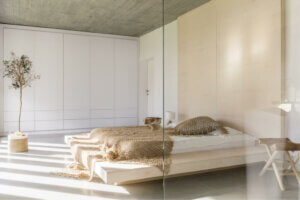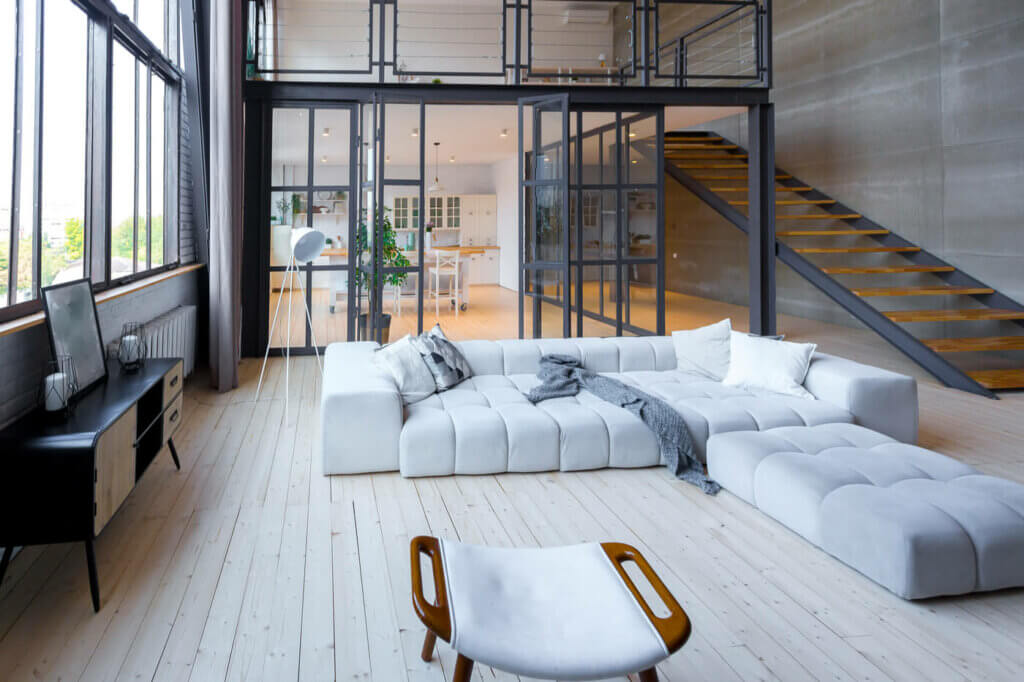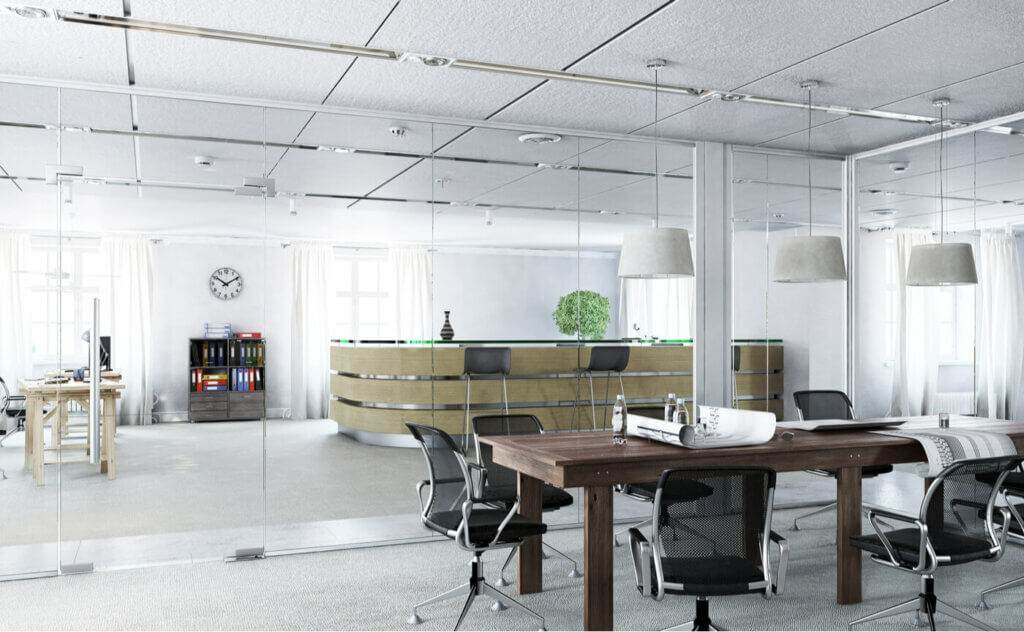Interior Windows to Boost Spaciousness

You’re probably wondering how to achieve more brightness and transparency in your rooms, especially if you live in a city apartment that doesn’t get too much sunlight. To solve this issue, today we’re going to tell you about interior windows.
You can find different situations in a home. One of them is the impenetrability and closure of certain rooms. This is quite common in inner-city neighborhoods.
Living in a home that looks out onto a patio or street allows you to introduce more light. However, your halls may look darker, which is why you may need to look for alternatives that offer you spatial solutions.
The benefits of interior windows

The first thing to understand is that interior windows don’t open onto streets. they open into the different rooms of a house. Ultimately, this is a way to achieve openness and a pleasant atmosphere.
On the one hand, it can allow you to break with the traditional system of having enclosed spaces, where there’s a feeling of narrowness and a lack of dynamism, something that isn’t positive if you take into account that you’re going to live in this place every day.
Direct contact between the spaces is achieved. This is mainly due to the level of transparency that glass provides. You can perfectly visualize what’s on the other side. However, whenever you want, you can reduce this visibility with curtains, blinds, or any other component.
It helps you to distinguish the areas of your house while maintaining contact between them.
Where to place interior windows in your home
Another question you can ask yourself is: where would the windows look good? Although it may not seem like it, there are various possibilities. You have to take the structural factor into account since you can’t place them anywhere.
- A particular case is rooms that face the main hallway of your home. Any of them can be a good option. However, you have to remember that they’ll affect privacy since anyone will be able to look inside.
- In the living room, they allow you to distinguish between the different areas in an obvious way. Interior windows are great ways to divide dining areas or create reading corners.
- If you have a workshop in your home, interior windows offer you the opportunity to show off your trade or hobby. In this case, it’d be pretty visible. But this wouldn’t matter, since the function of the room is well-defined and it doesn’t require privacy, such as bathrooms do, for example.
- In bathrooms, you can also use these windows to separate the areas. For example, to divide the toilet from the rest of the room and, achieve a more specific hygiene and comfort concept.
Types of interior windows

When it comes to choosing indoor windows, it’s important to know all the varieties the market offers. There are different styles and types, and some have truly interesting functional parameters.
Transparent ones are the most common. They allow you to see through the glass and don’t generate a strong separation. They produce depth and openness, which is the perfect way to make rooms seem more spacious.
Another case is semi-translucent windows, which aren’t that opaque and guarantee the penetration of light. You mustn’t forget another of the most popular, especially for bathrooms – frosted glass. You can’t see through them, but they favor light entry and energize environments.
A unique decorative element
These resources aren’t common in conventional homes, as they’re considered an aesthetic fad. On the other hand, interior windows are becoming increasingly popular in new homes. This is due to the innovative concept of spatiality that’s being worked on lately in interior design.
Generally speaking, we must say that they’re a good decorative bet. They aren’t only positive from a functional standpoint, but also as part of the overall design.
You’re probably wondering how to achieve more brightness and transparency in your rooms, especially if you live in a city apartment that doesn’t get too much sunlight. To solve this issue, today we’re going to tell you about interior windows.
You can find different situations in a home. One of them is the impenetrability and closure of certain rooms. This is quite common in inner-city neighborhoods.
Living in a home that looks out onto a patio or street allows you to introduce more light. However, your halls may look darker, which is why you may need to look for alternatives that offer you spatial solutions.
The benefits of interior windows

The first thing to understand is that interior windows don’t open onto streets. they open into the different rooms of a house. Ultimately, this is a way to achieve openness and a pleasant atmosphere.
On the one hand, it can allow you to break with the traditional system of having enclosed spaces, where there’s a feeling of narrowness and a lack of dynamism, something that isn’t positive if you take into account that you’re going to live in this place every day.
Direct contact between the spaces is achieved. This is mainly due to the level of transparency that glass provides. You can perfectly visualize what’s on the other side. However, whenever you want, you can reduce this visibility with curtains, blinds, or any other component.
It helps you to distinguish the areas of your house while maintaining contact between them.
Where to place interior windows in your home
Another question you can ask yourself is: where would the windows look good? Although it may not seem like it, there are various possibilities. You have to take the structural factor into account since you can’t place them anywhere.
- A particular case is rooms that face the main hallway of your home. Any of them can be a good option. However, you have to remember that they’ll affect privacy since anyone will be able to look inside.
- In the living room, they allow you to distinguish between the different areas in an obvious way. Interior windows are great ways to divide dining areas or create reading corners.
- If you have a workshop in your home, interior windows offer you the opportunity to show off your trade or hobby. In this case, it’d be pretty visible. But this wouldn’t matter, since the function of the room is well-defined and it doesn’t require privacy, such as bathrooms do, for example.
- In bathrooms, you can also use these windows to separate the areas. For example, to divide the toilet from the rest of the room and, achieve a more specific hygiene and comfort concept.
Types of interior windows

When it comes to choosing indoor windows, it’s important to know all the varieties the market offers. There are different styles and types, and some have truly interesting functional parameters.
Transparent ones are the most common. They allow you to see through the glass and don’t generate a strong separation. They produce depth and openness, which is the perfect way to make rooms seem more spacious.
Another case is semi-translucent windows, which aren’t that opaque and guarantee the penetration of light. You mustn’t forget another of the most popular, especially for bathrooms – frosted glass. You can’t see through them, but they favor light entry and energize environments.
A unique decorative element
These resources aren’t common in conventional homes, as they’re considered an aesthetic fad. On the other hand, interior windows are becoming increasingly popular in new homes. This is due to the innovative concept of spatiality that’s being worked on lately in interior design.
Generally speaking, we must say that they’re a good decorative bet. They aren’t only positive from a functional standpoint, but also as part of the overall design.
All cited sources were thoroughly reviewed by our team to ensure their quality, reliability, currency, and validity. The bibliography of this article was considered reliable and of academic or scientific accuracy.
- AA. VV.: Nuevas formas: revista de arquitectura y decoración, Edarba, 1935.







